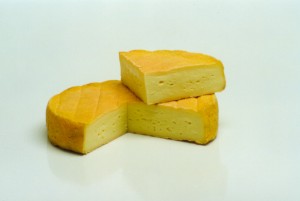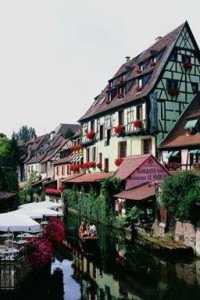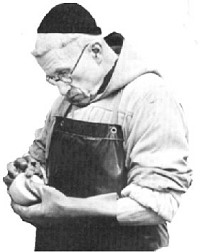
|
|
|||||
Munster originates from the upper Munster valley in the Vosges mountains of Alsace, France. Munster is an ancient cheese. It has been in existence since the Middle Ages and was originally made in monasteries. The name Munster comes from the town of that name which is itself a contraction of the word 'monastery'. Benedictine monks, Irish monks who settled in the Vosges in the 7th century, observing their order's rule against meat, sought nourishment in milk and its derivatives. Although it was first made for their own consumption, the monks later taught the local peasants how to make Munster cheese. The local people then used their cheeses to help pay rent to the monks whose land they farmed. The success of the cheese led to it being produced over a wide area and brought a little prosperity into a harsh and deprived region. Our Munster comes from one of only a few farms still producing the cheese. These are found along the top of the Vosges and to the west of the small town of Munster. Milk from the Vosgienne cow is used. The cows were originally imported from Scandinavia during the 18th century. They graze in the valleys and the mountain pastures called Chaumes, from which the popular Chaumes cheese is named. Most Munster available today is made in factories using pasteurised cows' milk. Our Munster, however, is the original farm produced version made with unpasteurised cows' milk. Pasteurisation destroys the perfume of the flowers of the high chaumes on which the cattle graze. Maturation takes place at a temperature of 12-14ºC. This takes 4 to 6 weeks for small thin cheeses and 2 to 3 months for thicker larger cheeses. Farm Munsters are first matured for a week outdoors before being transferred into caves, They then sit on rye straw next to older Munsters from which they acquire the rind flora. Every other day the cheeses are washed and brushed with brine and annatto. The paste is soft and creamy and has a shiny brick red rind. As with all the washed rind cheeses, Munster has a strong, penetrating smell develops a tangy taste when fully mature. Our cheeses are approximately 150mm in diameter, 30mm thick, 500g in weight and have a fat content of 45-50%. The best seasons are summer and autumn and the very best cheeses are made with milk from the 'high stubble' of the Vosges. The wine to accompany Munster is the local Gewurztraminer or full-bodied and full- bouquet red wines or even a beer - the region is close to the beer loving nation, Germany. Munster is often eaten with baked potatoes and finely chopped onions. Munster flavoured with caraway seeds is also to be found but purists believe it should be enjoyed without. A cheese called Géromé is made on the other side of the Vosges mountains in Lorraine. Munster gained its A.O.C. in 1969 and in 1978 the A.O.C. Munster- Géromé united these two cheeses. Click here or press your 'Back' button to return |
Click here r press your 'Back' button to return
Above: A typical town of Alsace with wooden framed buildings and an abundance of bright geraniums hanging from every window sill.
Above: The regular washing of a Munster cheese encourages its pungent development. |
|||||
| All articles © www.teddingtoncheese.co.uk | ||||||


